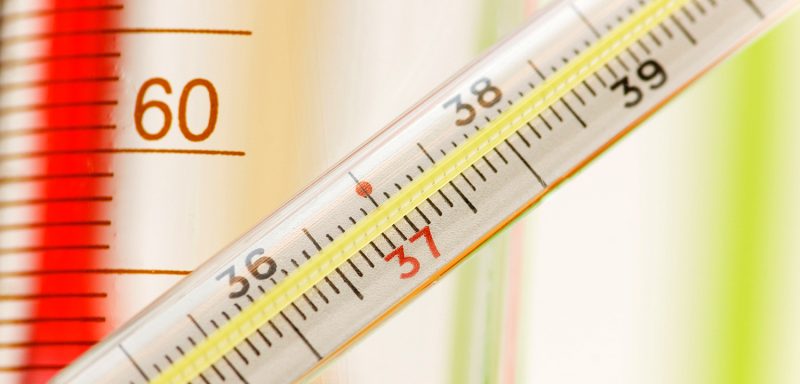
With everything digital these days, it’s rare to see a mercury thermometer and it’s even more rare to break one. But it does happen and mercury is one of those scary metals you don’t want to mess with.
The good news is that our bodies do not absorb liquid mercury easily through the skin, so don’t worry if you accidentally touch it. That said, we do easily absorb mercury vapors into our lungs, so you still do need to be careful.
If you’re pregnant, nursing or have small children, you should also be aware that even small amounts of mercury vapor can be especially harmful to unborn and nursing babies, as well as to the small lungs of children and pets.
There are different ways to clean a broken mercury thermometer, depending on the surface where the mercury has landed.
This article covers how to clean liquid mercury:
-
- From smooth surfaces (such as floors and countertops)
- From absorbent surfaces (such as clothing, carpets, and upholstery)
- In larger quantities (such as a high school science lab)
- Good to know
Clean a broken mercury thermometer from smooth surfaces
- First, make sure any children, pets and pregnant women leave the area immediately.
- Do NOT vacuum or sweep the broken thermometer pieces.
- Instead, put on a pair of rubber or latex gloves and carefully pick up broken glass or plastic with a paper towel. Seal the pieces in a plastic bag.
- Mercury beads move FAST. Using a small piece of paper or cardboard, very slowly roll the mercury beads onto a second piece of paper and seal everything into another plastic bag.
- Shine a flashlight at an angle to find small shiny pieces that still need to be gathered. Pay special attention to any creases or cracks, where the mercury will be harder to see. Mercury can travel fast and far, so go beyond your immediate area to inspect the entire floor.
- Use an eyedropper to suck up the leftover mercury beads. Squeeze them carefully onto a damp paper towel and then seal it all in a plastic bag.
- Dot the floor with duct tape to pick up any remaining beads or small pieces of glass that you may not see. If you don’t have sticky tape, put shaving cream on an old paint or makeup brush, and dot the floor for loose pieces. Again, seal it in a plastic bag.
Post-cleanup
You’ll need to label and dispose of each bag, but different municipalities have different ways of doing it. Call your local health department or municipal waste facility to find out how.
Once the area is cleaned up, you’ll still want to keep all pets and people away. Turn on a fan, face it toward an open window and ventilate the area for 24 hours.
Clean liquid mercury from absorbent surfaces
- First, cut out the contaminated pieces of fabric and seal them in a plastic bag.
- The requirements for disposing of a broken thermometer can differ by city, Call your local health department or municipal waste facility to ask how to label and dispose of the bag.
- Keep the area well ventilated for at least 24 hours by facing a fan toward an open window.
- Again, keep all pets and people away from the area during this time.
Cleaning up larger quantities of spilled mercury
If you’ve spilled a larger amount of liquid mercury than what’s normally in a thermometer — in a high school science lab, for example — have everyone leave the area immediately.
- Do not walk through the mercury spill, or you may risk spreading it.
- Open all doors and windows to the outdoors, and shut all the doors to other parts of the building.
- Turn down the temperature to avoid creating more fumes.
- Call your local health or fire department for further instructions right away. They’ll either handle it directly or walk you through safely disposing of the mercury.
Good to know
- Never vacuum or sweep mercury. This spreads the vapors through the air and increases exposure.
- Mercury is a hazardous waste. Never dispose of it with the regular household trash, unless following the specific safety instructions from your local hazardous waste facility.
- You can recycle old thermostats and thermometers with your local household hazardous waste programs. Call the facility for collection times or drop it off directly.











